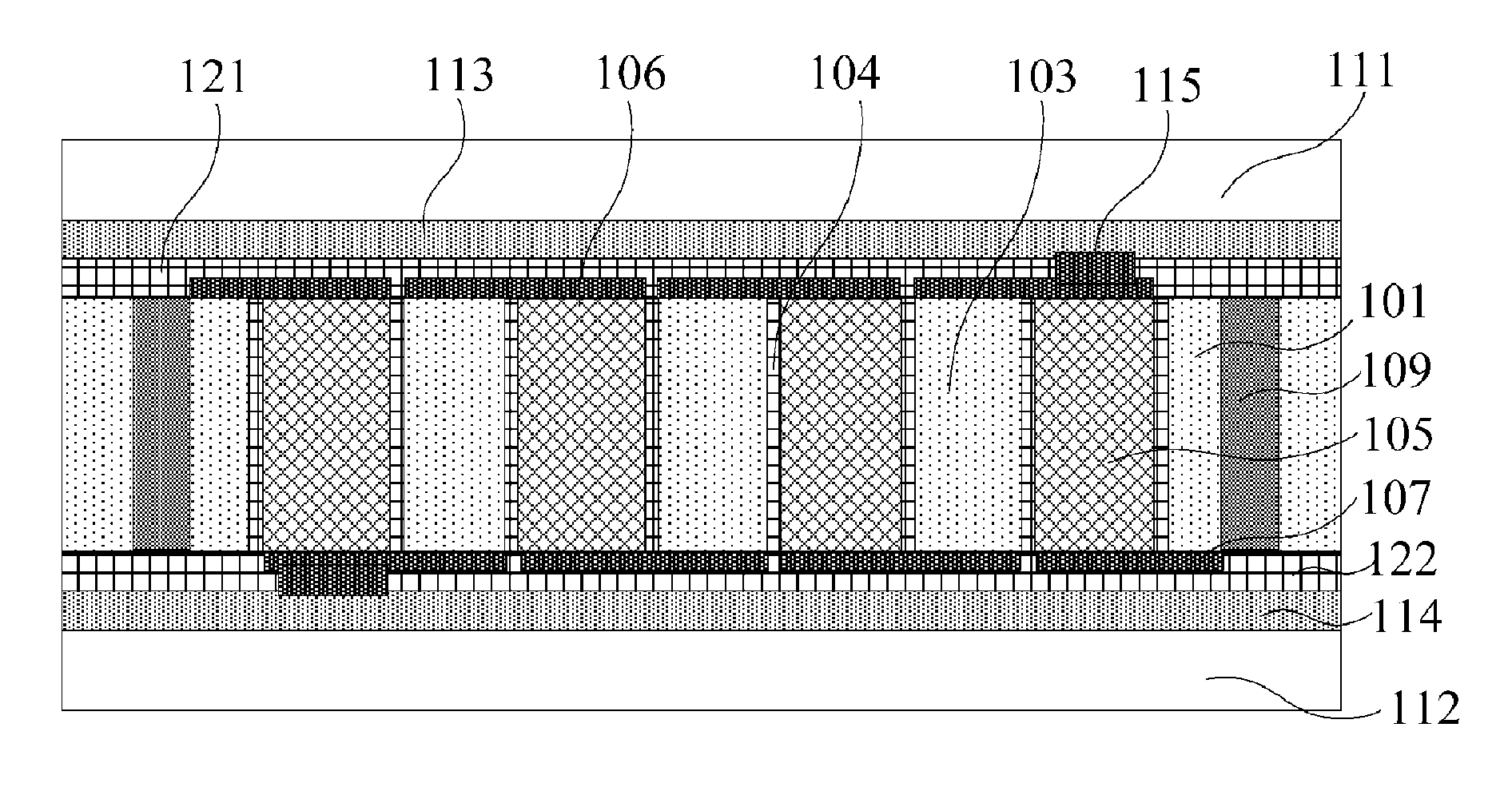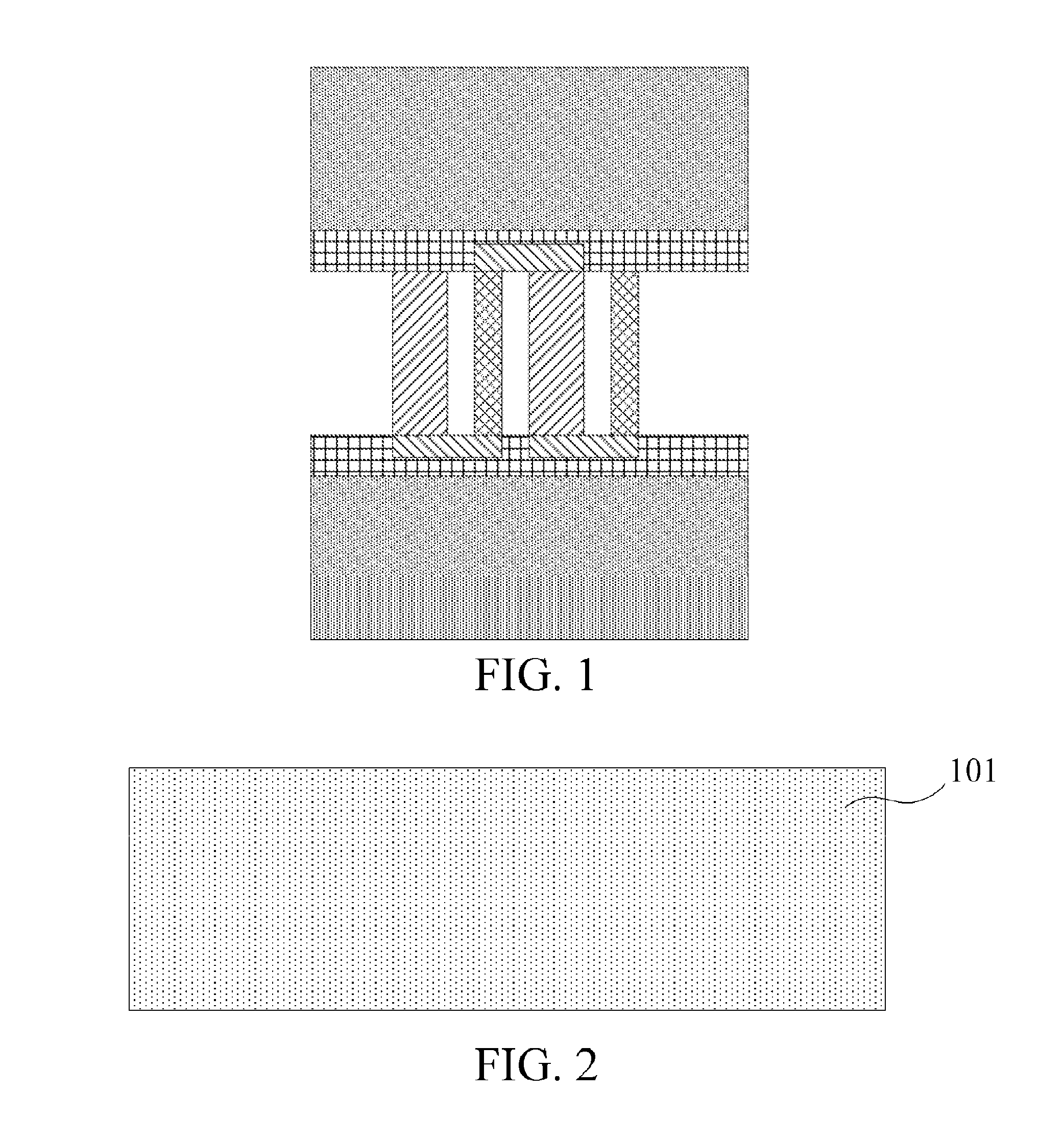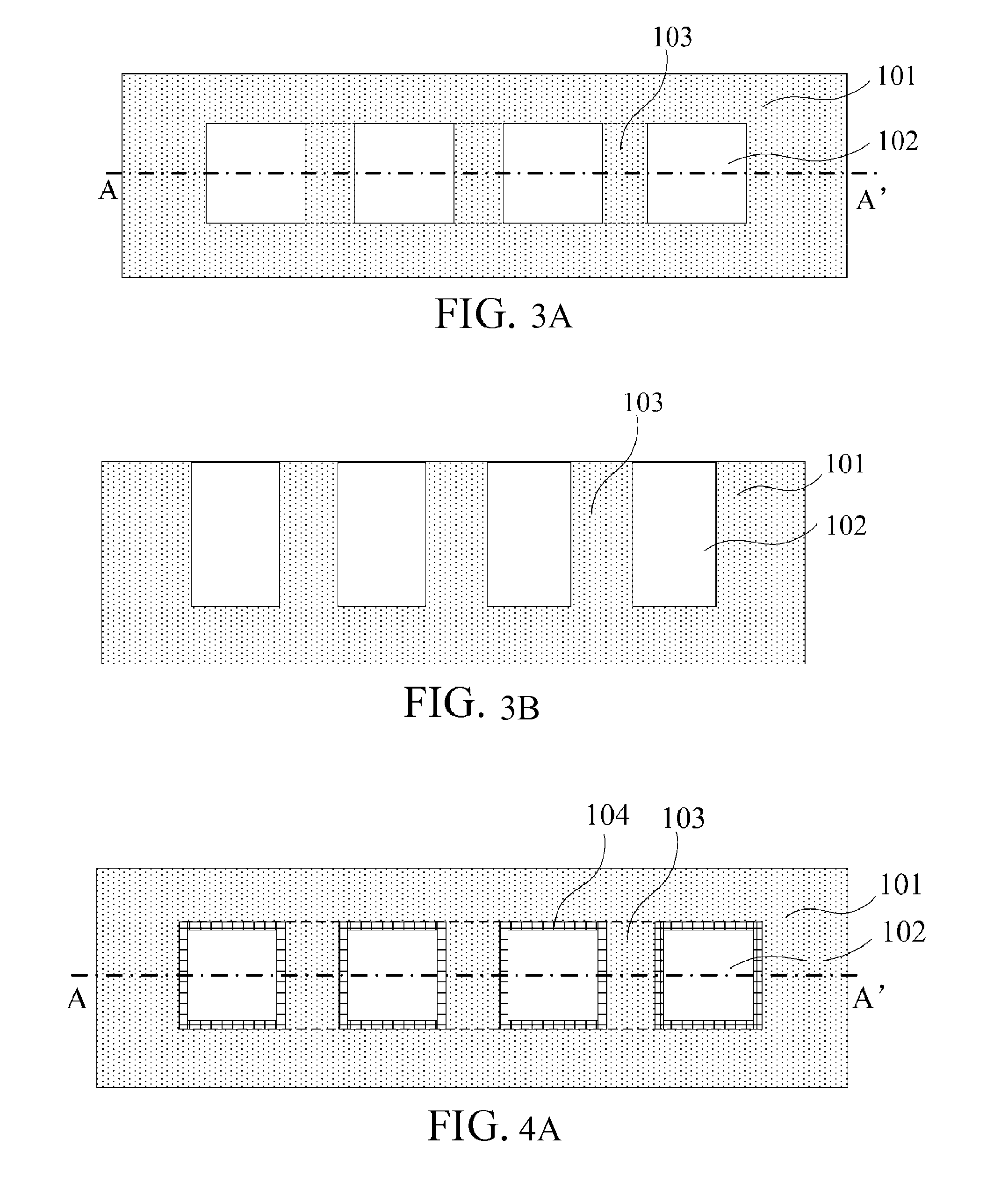Three-dimensional thermoelectric energy harvester and fabrication method thereof
- Summary
- Abstract
- Description
- Claims
- Application Information
AI Technical Summary
Benefits of technology
Problems solved by technology
Method used
Image
Examples
embodiment 1
[0057]Referring to FIG. 2 to FIG. 11, the present invention provides a method for fabricating a three-dimensional thermoelectric energy harvester, which at least includes the following steps.
[0058]First, as shown in FIG. 2 to FIG. 3B, step 1) is performed, wherein a silicon substrate 101 is provided, and an upper surface of the silicon substrate 101 is etched to form a plurality of grooves 102, two neighboring of which are arranged at an interval, so that the grooves 102 and regions for preparing silicon columns 103 between the grooves 102 form a thermopile region. In this embodiment, the silicon substrate 101 is a low-resistivity silicon substrate 101, which has a high Seebeck coefficient and low resistivity, and therefore can ensure high thermoelectric efficiency when being fabricated into a thermoelectric column. To ensure a precise process, in this step, the low-resistivity silicon substrate 101 is polished first, and then a photolithographic pattern is fabricated on a surface o...
embodiment 2
[0065]Referring to FIG. 2 to FIG. 10B and FIG. 12, basic steps of the method for fabricating a three-dimensional thermoelectric energy harvester in this embodiment are as described in Embodiment 1. To further improve the mechanical stability and thermoelectric efficiency of a thermopile, the step 7) further includes a step of filling an electrical and thermal insulating material 109 in the annular groove 108.
embodiment 3
[0066]Referring to FIG. 2 to FIG. 10B, FIG. 13 and FIG. 14, basic steps of the method for fabricating a three-dimensional thermoelectric energy harvester in this embodiment are as described in Embodiment 1 or 2. To achieve monolithic integration of the three-dimensional thermoelectric energy harvester consistent with the present invention and a circuit so as to directly supply power to the circuit on-chip, the method for fabricating a three-dimensional thermoelectric energy harvester consistent with the present invention further includes a step of fabricating CMOS circuit structures 113 and 114 on the upper supporting substrate 111 and the lower supporting substrate 112, wherein the upper passivation layer 121 and the lower passivation layer 122 each are etched to form a contact hole 115, and then metal wires are fabricated through the contact holes 115 to respectively connect the CMOS circuits structures and the upper metal wiring and the lower metal wiring. Afterward, the upper pa...
PUM
 Login to View More
Login to View More Abstract
Description
Claims
Application Information
 Login to View More
Login to View More - R&D
- Intellectual Property
- Life Sciences
- Materials
- Tech Scout
- Unparalleled Data Quality
- Higher Quality Content
- 60% Fewer Hallucinations
Browse by: Latest US Patents, China's latest patents, Technical Efficacy Thesaurus, Application Domain, Technology Topic, Popular Technical Reports.
© 2025 PatSnap. All rights reserved.Legal|Privacy policy|Modern Slavery Act Transparency Statement|Sitemap|About US| Contact US: help@patsnap.com



